We may receive a commission when you use our affiliate links. However, this does not impact our recommendations.
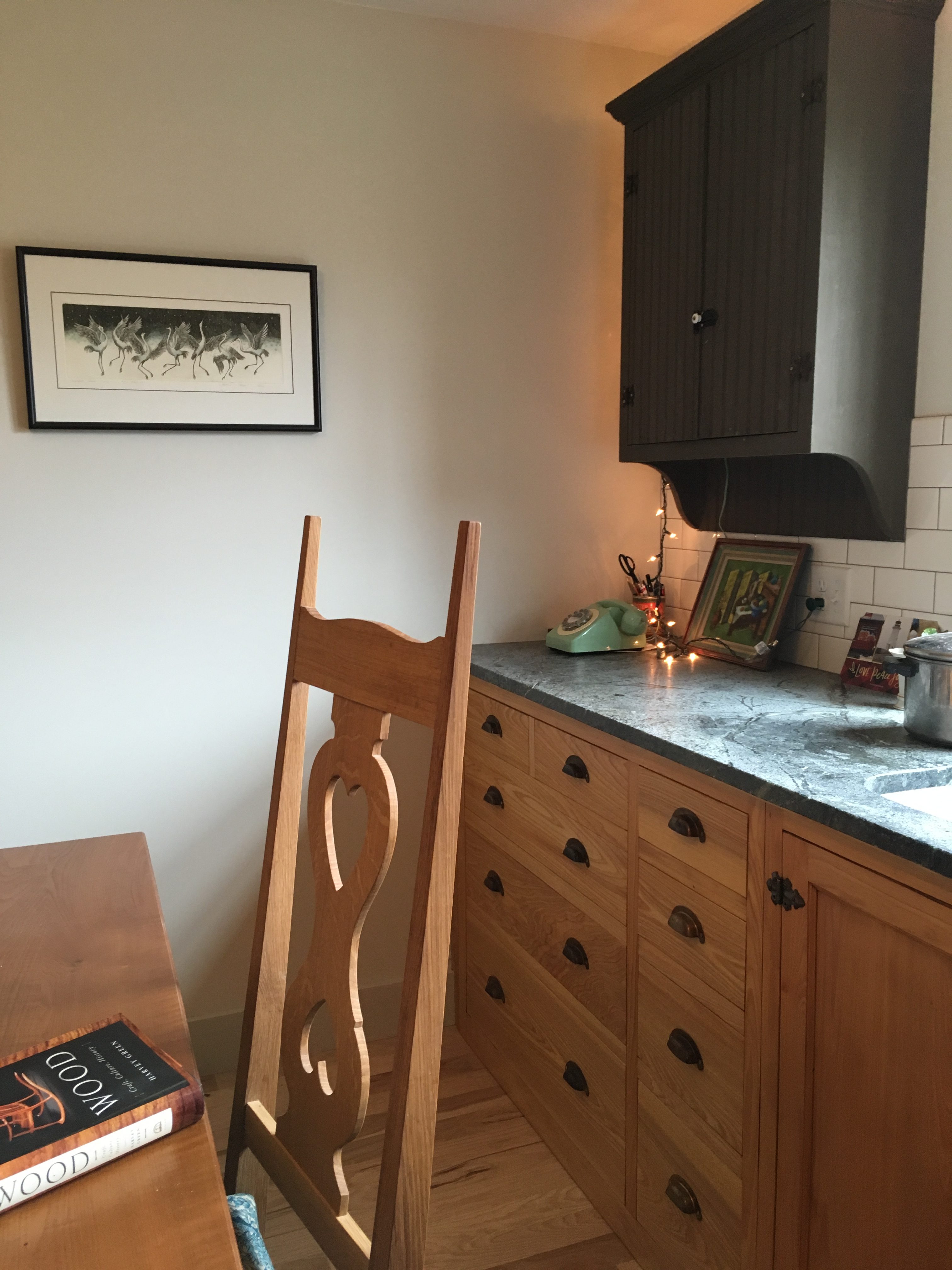
Drawers in place of doors. The left section of this cabinet run looks like a chest of drawers, thanks to applied faces. I wanted the faces to line up with the adjacent drawers (the stack of four narrow ones) at their right. The print of sandhill cranes is by Marina Terauds. The framed enamel painting on the counter is by Karl Drerup. The cabinet faces are cypress purchased from Frank Miller Lumber. Drawer pulls are salvaged. The counter is pale gray soapstone. The hayrake table and chairs are from my book English Arts & Crafts Furniture; you can build your own. The pillow case on the chair is made with a William Morris pattern adapted by Roostery because I am too lazy to sew. The fabric is from Spoonflower.
Drawers are more practical than doors for most kitchen base cabinets. Here’s a quick guide to converting a cabinet from doors to drawers.
Editor’s note: Nancy Hiller passed away on August 29th, 2022 after a long battle with cancer. In honor of her memory, we will be sharing some of our favorite contributions from her over the years. This article was originally published in the Popular Woodworking Shop blog on December 17th, 2018.
Through much of the 20th century it was conventional for base cabinets in kitchens to have doors with shelves inside–usually one fixed shelf about half-way up, projecting between 1/2 and 2/3 of the way toward the cabinet front (the shelves’ partial depth allowing users to see more of the contents on the cabinet’s floor). Those familiar with such cabinets can attest to their impracticality. They are an invitation to stack contents high, so when you need a griddle or wok you have to get on the floor and perform an archaeological excavation, pulling out everything you don’t want to reach what you do, only to shove the lot back inside to clear the counter so you can cook. And who has not experienced the exasperation that is a Tupperware avalanche?
For a few years a transitional mode of storage reigned, with pull-out trays behind the base cabinet doors. The trays were typically mounted on runners that extended about 3/4 of their length, allowing you access to most of the trays’ contents without having to get on your hands and knees. But you still had to open the cabinet doors to pull out the trays. Not only did this system require wasted motion; in many cases it also wasted space, necessitating extra room on each side of the trays to allow them to bypass the thickness of the opened doors.
Enter the latest solution for base cabinet storage: the drawer. A sturdy drawer on full-extension slides gives you access to the cabinet’s contents with a simple pull of the handles. As one of my customers put it, “It brings the contents of the cabinet to you, instead of you having to go into the cabinet and scrounge around for them.”
It’s relatively easy to convert a cabinet from doors to drawers. You just have to mind the specs of the particular hardware you’re using, as well as allow for how your cabinets are made. Here are some points to bear in mind and a step-by-step example.
Considerations
Are the doors inset, half-inset, or full-overlay? You will want to take relevant implications into consideration as you plan, build, and install your drawers.
Which type of slide hardware will you be using? There’s some helpful information in three of my previous related posts:
Shop Made Jigs for Installing Blum slides
3 Kinds of Drawer Slides
Sizing Parts for Drawers on Blum Tandem Slides
Follow the manufacturer’s instructions regarding the position of the drawer slides. For instance, Blum Tandem slides may be mounted to the cabinet side or to the face frame and back, by means of a bracket. If your cabinet has a face frame that protrudes into the door opening relative to the cabinet sides, as in the example below, you also have the option of shimming the slides out so that the drawers will bypass the face frame.
***
Last winter, as part of a kitchen remodel in which I removed the cabinets I had made a dozen years earlier and refinished them, I converted a two-door cabinet with pullout trays to a drawer cabinet. To save time and materials, I reused the existing trays, modifying as necessitated by the slide hardware. Had I built new drawers, I could have gained a little extra space at each side, but instead I kept the existing spacers that had shimmed out the trays so they would bypass the doors. This is our kitchen, so the work is far less refined than what I would put into a customer’s house, and I compromised in various ways just to get the job done.
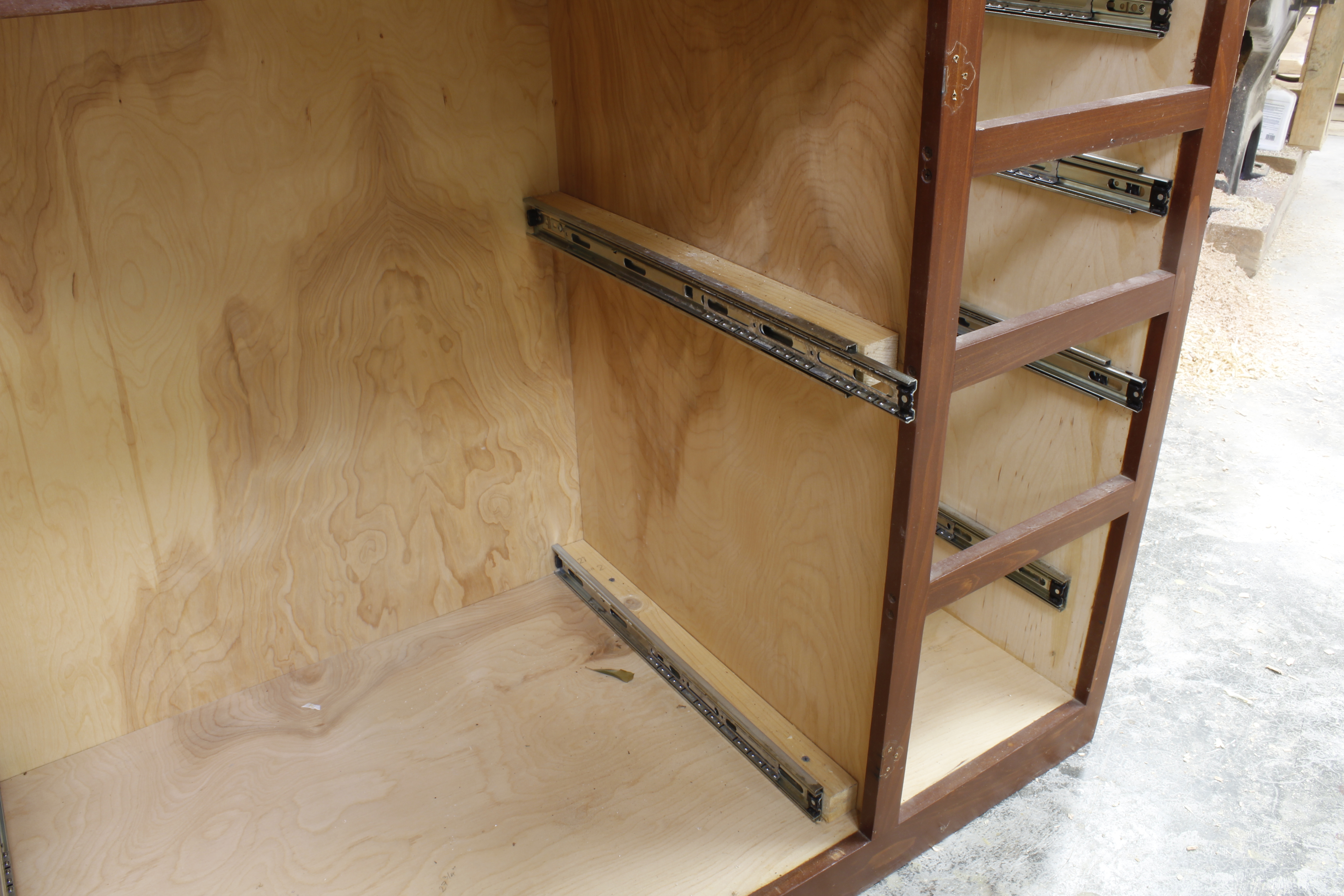
Originally the cabinet had two pullout trays on Accuride ball-bearing slides. A pair of doors on butterfly hinges concealed the contents.
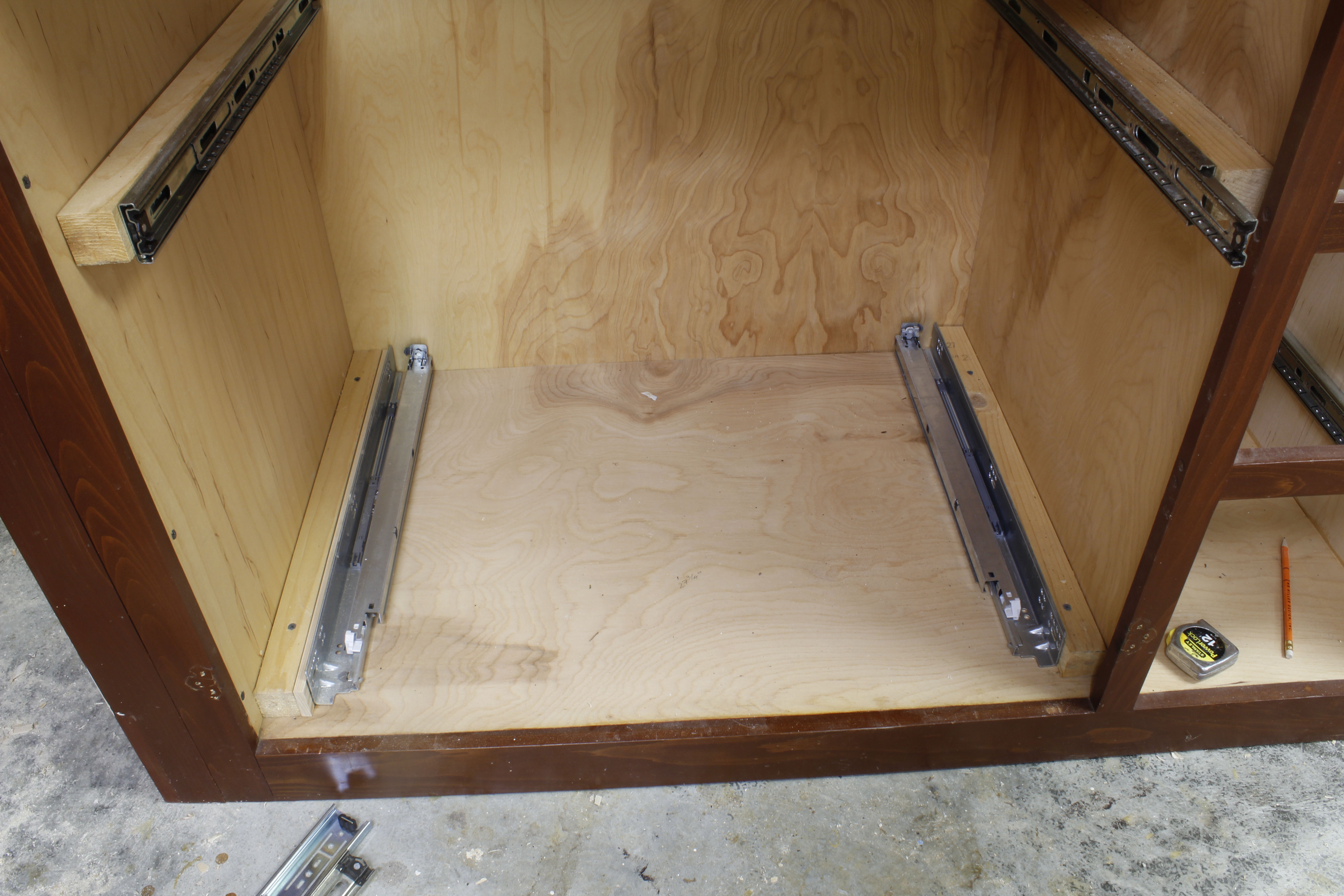
I changed out the slides for Blum Tandem hardware. Because I wanted to reuse the existing trays as low-sided drawers–I prefer the low sides, as they make it easier to see the drawers’ contents and reach in to get things out–I had to modify the width of the cabinet interior in order for the new hardware to work. I did this by adding a thin strip of wood, as you can see at the left.
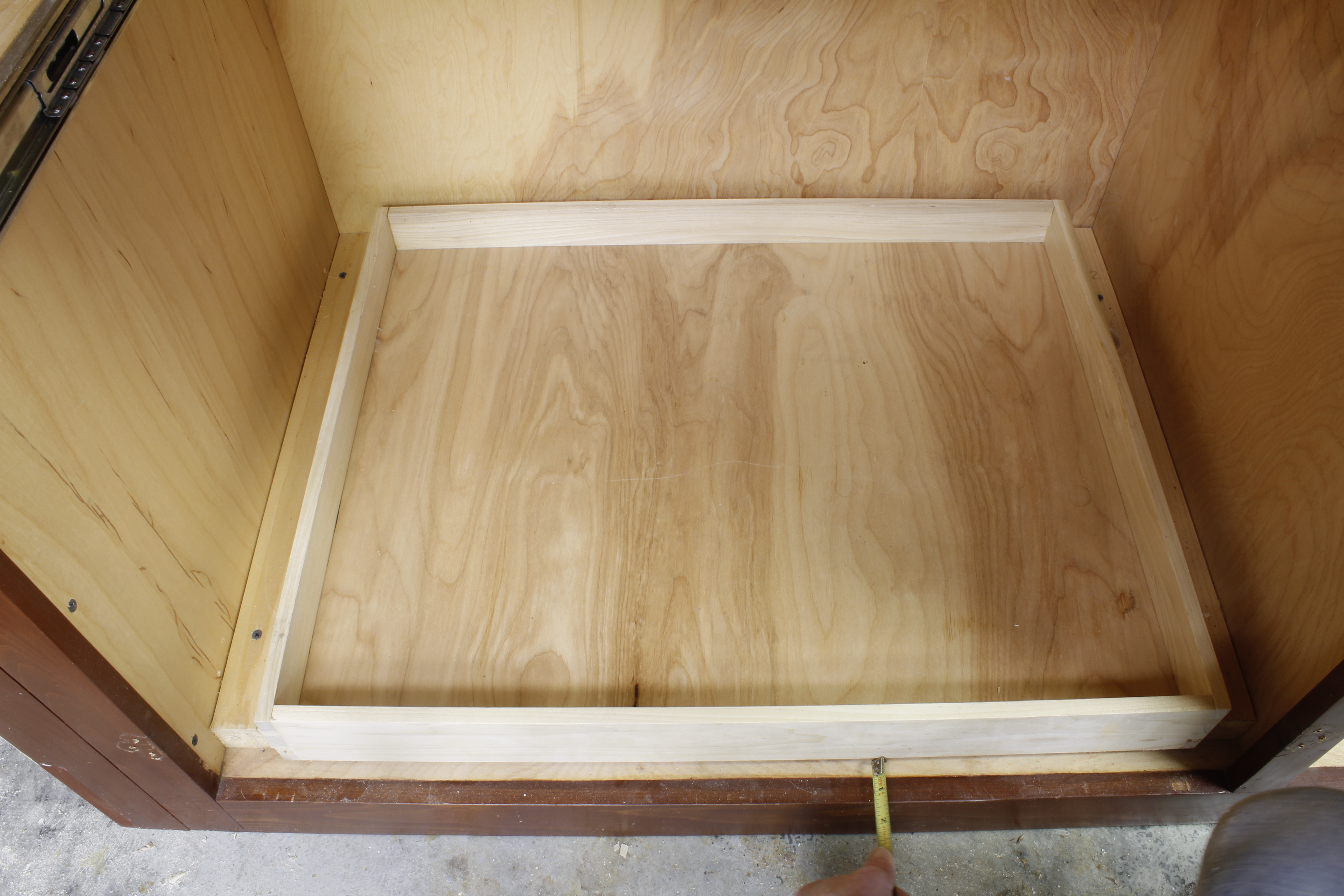
With the cabinet width sorted out, I turned to the location of the slides relative to the front of the cabinet. Blum Tandem slides must be mounted 4mm behind the plane of the drawer face. In this case, the faces would be inset, so that meant adding 4mm to the thickness of the applied drawer face. Blum Tandem slides also have specific requirements regarding the depth of the drawer. Their lengths vary by 75mm (or 3″) increments. Fortunately my “drawers” were 21″ from front to back, ideal for the 21″ Tandem.
The other important measurement when using Blum Tandem slides is the distance between the bottom edge of the drawer and the underside of the drawer bottom. It should be 1/2″. Mine was closer to 3/4″, so I trimmed the fronts and sides on the tablesaw using the rip fence. If your cavity is too small, you can glue strips to the bottom edges of the drawer to get the required 1/2″.
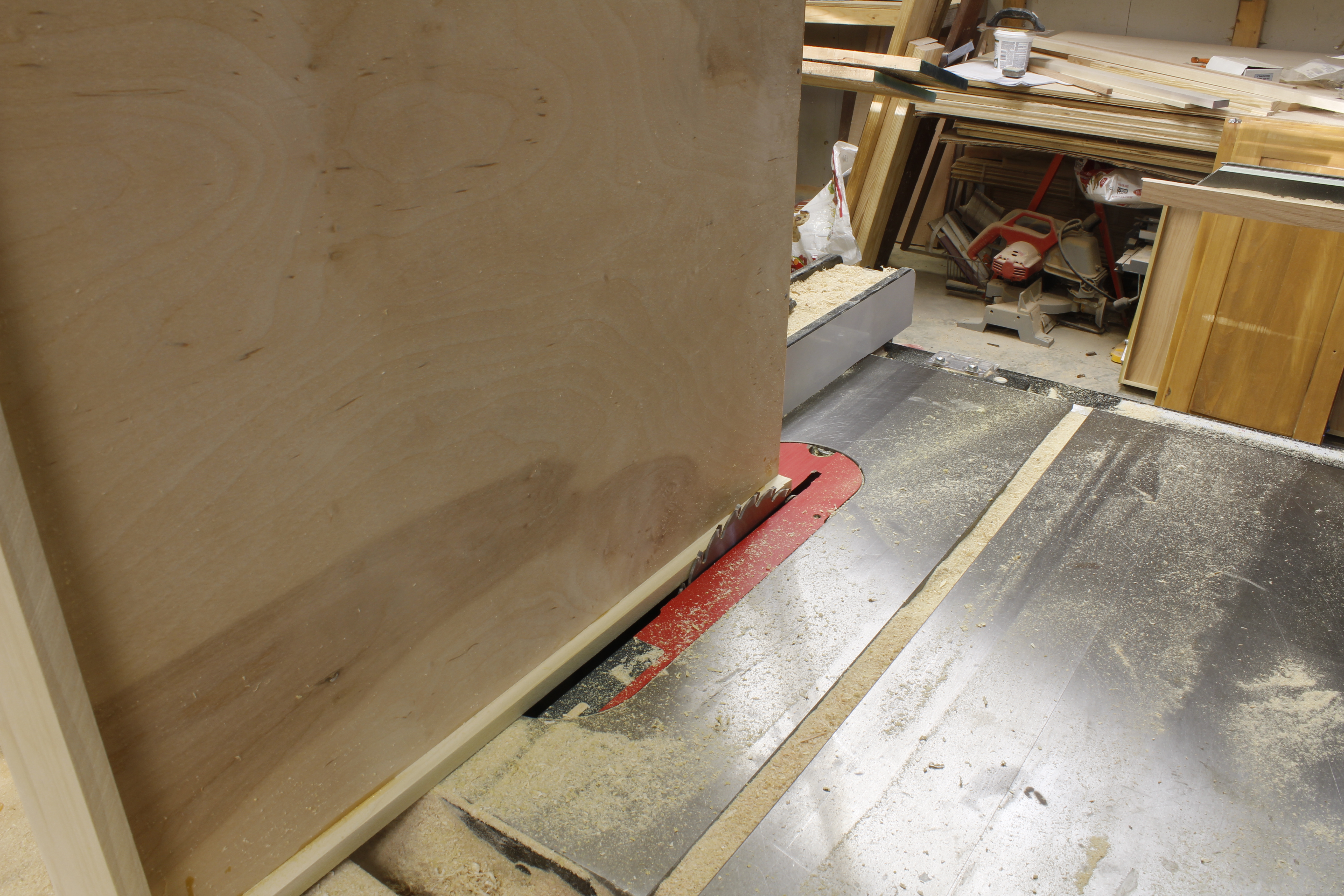
After trimming the drawers, I applied the Tandem locking devices and drilled the holes at the back for the tilt mechanisms.
Next I built the faces. These faces are more complicated than most, because they are designed to look like multiple drawers, a sleight of hand I sometimes employ to get desirable proportions. You could make faces out of plywood with solid edges if you’re going to paint the cabinets, or you could build frame-and-panel faces (like doors, but placed horizontally). I wanted the look of a chest of drawers, so I made drawer faces to match the proportions of those at the right of this cabinet, gluing them to false drawer rails. I cut a tiny rabbet into the drawer rail to mimic the look of the space that would be around a drawer face if the rail were real. For the vertical divider between the two top drawer faces, I used biscuits to line up the parts but only applied glue part of the way up, to allow the faces to expand and contract without splitting.
Aside from finessing the fit of all the parts, the last step for low-sided drawers with tall faces is to fabricate a support system that will keep the drawer face flat and square to the drawer while allowing the drawer face to move with changes in humidity. My crude solution (in this case) is pictured below: a pair of angled struts joined at the top by a horizontal rail. Oversize holes in the horizontal rail are fitted with panhead screws run through washers, to let the drawer face expand and contract.
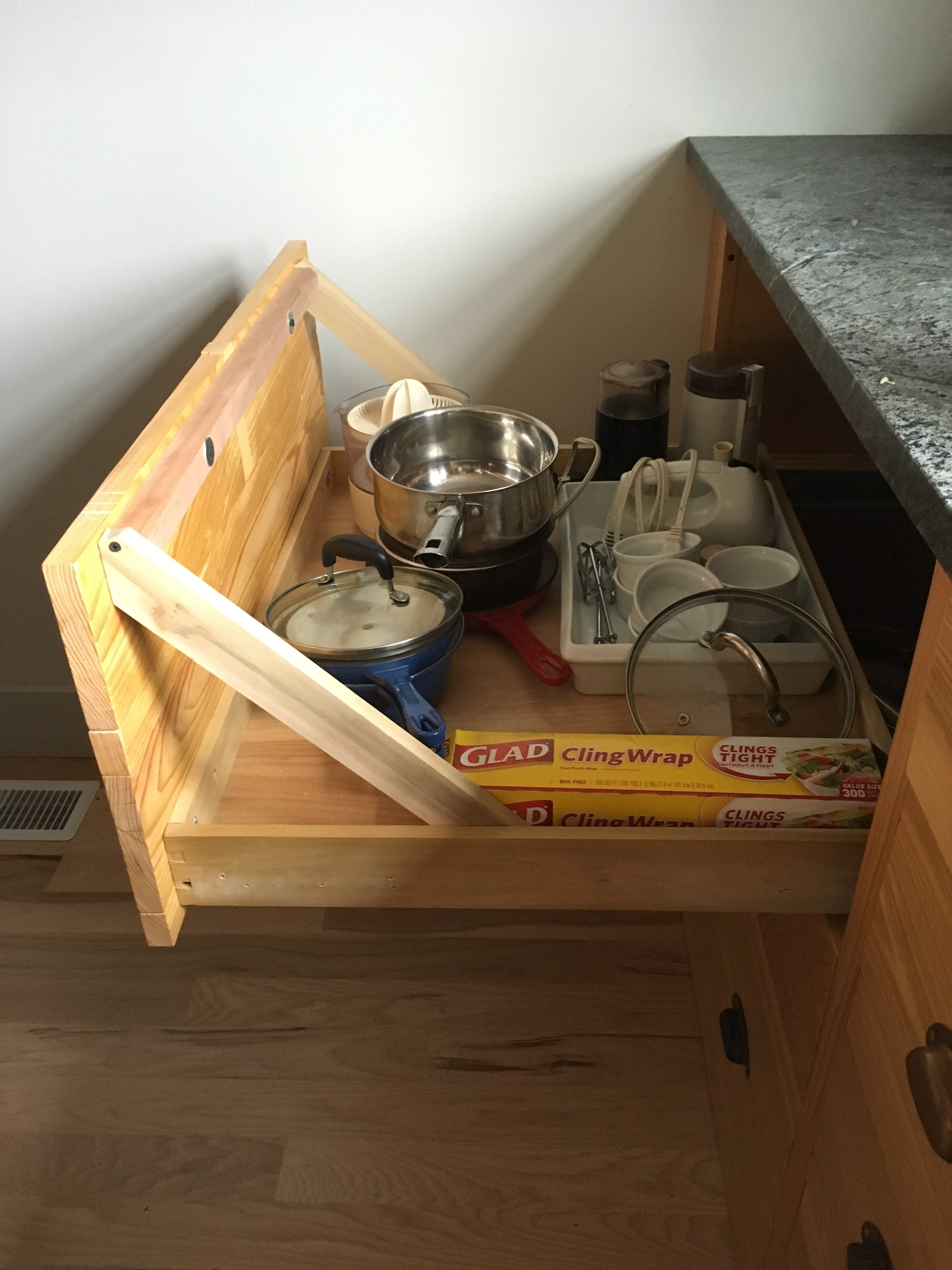
Low-sided drawers allow you to see the contents and take things out, then put them away, with ease. You can see that I didn’t bother to fill the holes from the old slide hardware. (As I mentioned before, this is my kitchen, not built for a customer. I just wanted to get it done.)
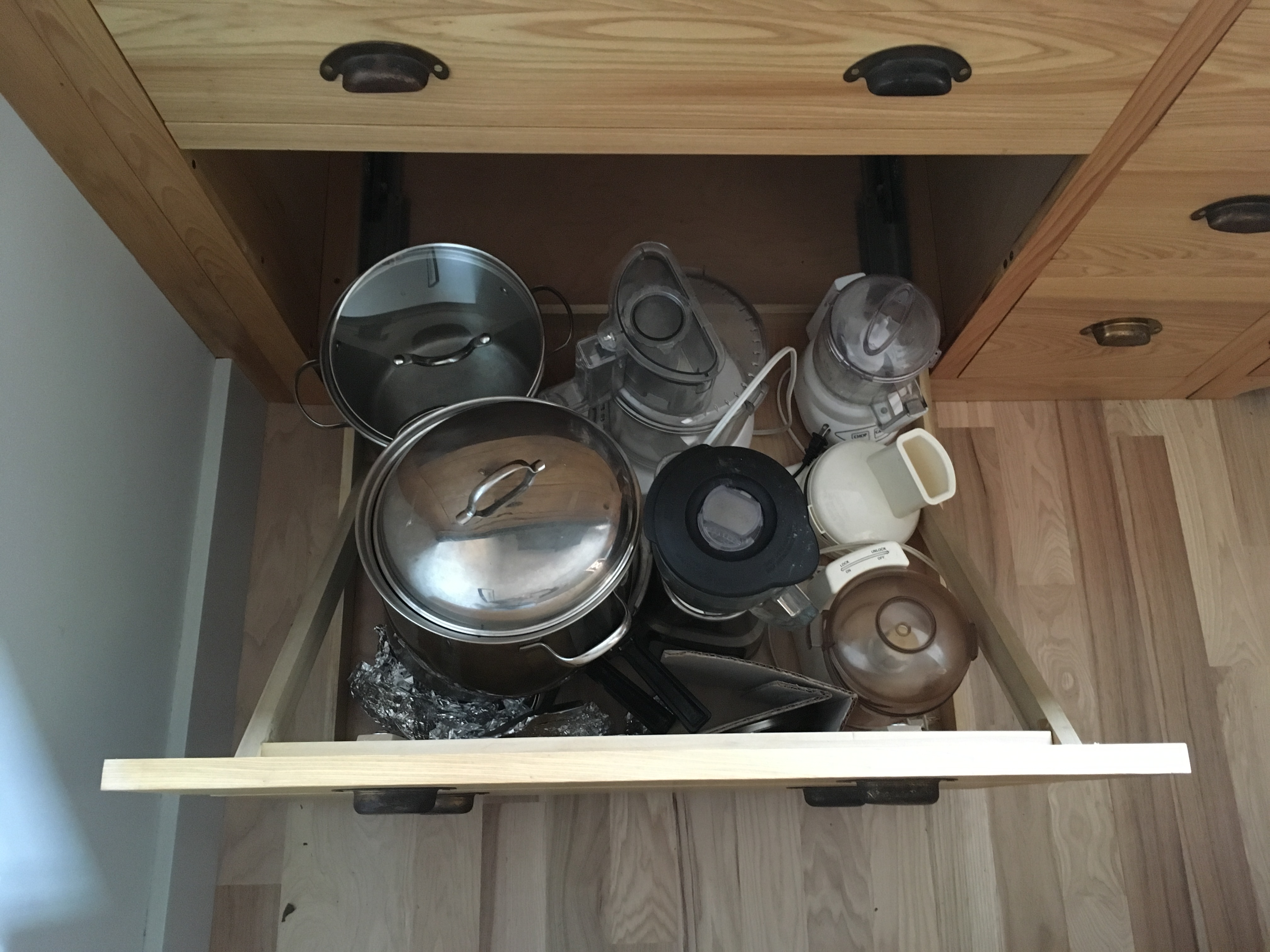
The bottom drawer now holds food processors (used for different operations), a pasta pot and a large soup pot, blender, assorted blades, and tin foil for reuse.
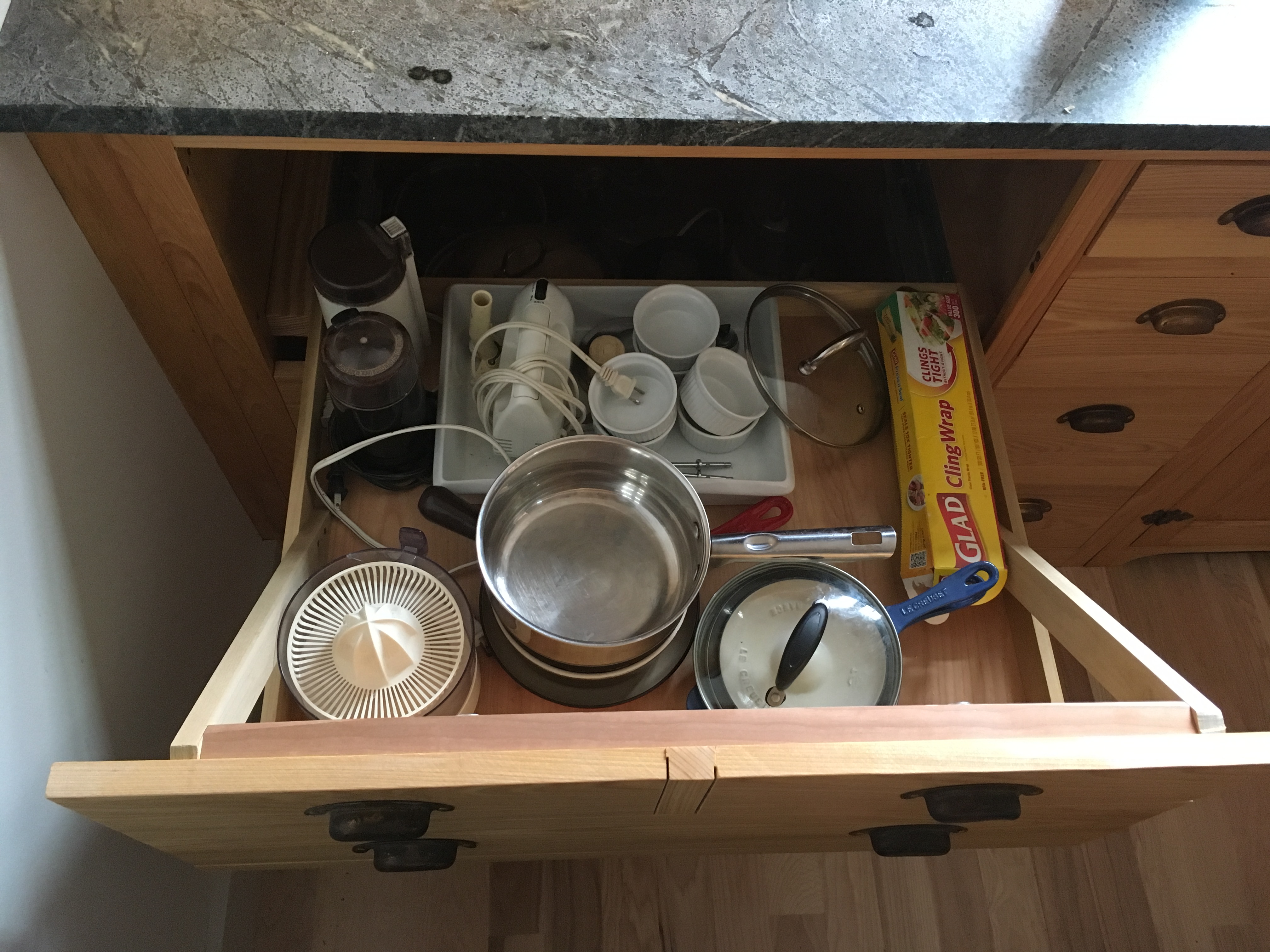
The top drawer holds a citrus juicer, hand-held mixer, small pots, ramekins, and other items.
If you are making multiple drawers and want to have rails between them (as in the cabinet to the right of the one I modified here), simply make the rails out of the same material as the rest of the cabinet face and attach them with pocket screws. I had to do this while modifying another cabinet in our kitchen, taking it from a half-round lazy Susan to a basic set of drawers. (Yes, the corner space that used to be available for storage–in theory–is now being wasted. Totally worth exchanging a semi-useful large cabinet for a smaller one that functions superbly.)
Find more techniques like this in Kitchen Think, Nancy’s book from Lost Art Press.
Here are some supplies and tools we find essential in our everyday work around the shop. We may receive a commission from sales referred by our links; however, we have carefully selected these products for their usefulness and quality.







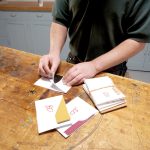
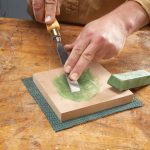
You are very creative in the kitchen!
Speaking of drawers… have you ever used custom drawers from online suppliers? You enter the dimensions, select the material and a week or so later, the drawers arrive ready to install. They will even notch and bore them for blum tandem slides. Heres on such company:
https://www.drawer.com/standard-drawer
I’m aware of businesses that make drawers and doors, but making them myself is part of my business. Maybe someday I will enter the 21st century.